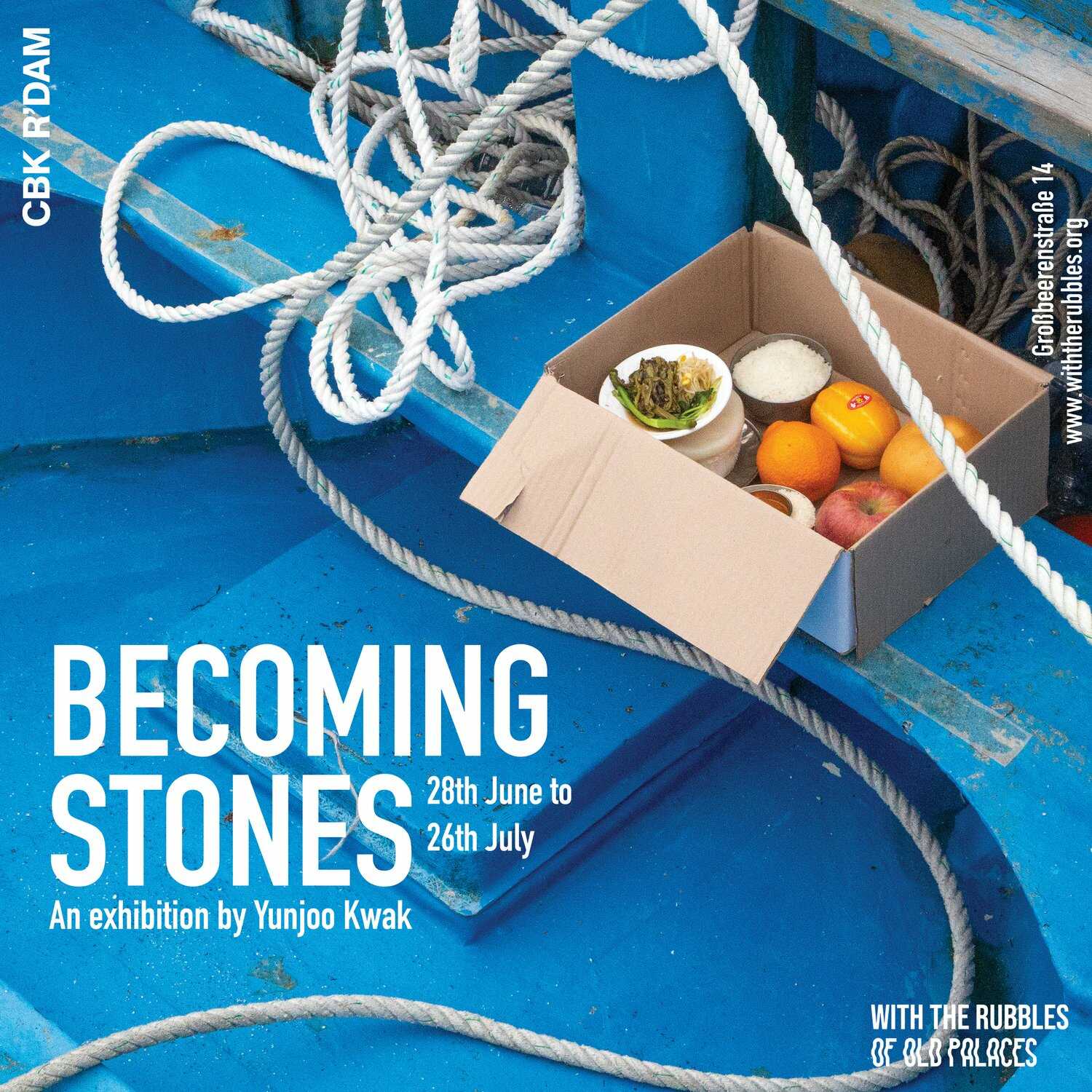“Becoming Stones”, an exhibition by Yunjoo Kwak (DAI, 2011) delves into the figure of the Jeju Simbang (Jeju Shaman) as the spiritual agent through which the aftermath of the Jeju Massacre has been, and continues to be, addressed. The 4.3. Jeju Massacre was the mass killing of alleged communist rebels on Jeju Island on April 3, 1948, during the US military occupation of 1945-1948. A massive death toll of 30,000, nearly one-tenth of the entire island’s population, resulted from the mass executions by both the Korean police and the US military forces. This event highlighted the unresolved conflict and ideological divisions leading to the Korean War, and became one of the first outbreaks of violent ideological conflict in the Cold War period. Kwak’s new documentary, “Simbang” (60mins, 2024) offers a journey of grief through a series of movements, chants, tears, dances, laments, narrations, commonings, purifications and ritualisations that oscillate between the seen and unseen worlds. In Jeju Island, “심방” (Simbang, 神房) refers to a shaman. “神” (Sim) means spirit, and “房” (Bang) means space or room, evoking the spatial aspect of the shaman's body in connection to the unseen, untouched and unheard, yet powerfully animated world. Their body becomes a sacred vessel where the echoes of the past converge with the immediacy of the present, and glimpses of the future unfold. June 28 – July 26, 2024 @ with the rubbles of old palaces
“Becoming Stones” looks at the process of spiritual recovery in the aftermath of the 4.3 massacre through a series of Jeju shamanic rituals. These practices have become a way to process trauma through generations, a means to break the silence of political oppression, and a way through which to survive life. This project attempts to shift shamanic discourse into the wider public realm by sharing their ongoing practice. During these rituals, the Jeju myth’s 18,000 spirits and the life stories of the people who died in 1948 come together to weave a history of their sorrow and violence, enabling the processing of trauma. The physical, psychic, and emotional impacts of trauma go beyond the limits of the dominant historical archive and its knowledge. Through the documentary’s images, one can hear the ancestors speak through the body of the Simbang. In what ways can tragedy and a history of violence be transformed into life-giving forces of healing?
About Yunjoo Kwak
with the rubbles of old palaces
Opening: Friday, June 28, from 6pm till late
|
|

